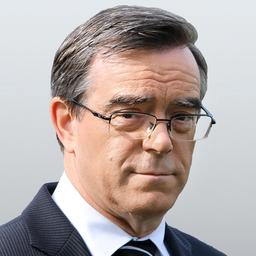Despite the flimsy excuses of apologists that such displays and protests are “merely” anti-Zionism, they have led numerous commentators to draw explicit, horrified, baffled comparisons to the 1930s that, while legitimate to a point, actually fail to express the far greater seriousness of the situation today.
As in the 1930s, Canadians manifesting hostility toward Jews today are often linked to foreign governments openly hostile to, even to varying degrees actually at war with, us and our way of life. And as in the 1930s, official Canada has reacted feebly to both.
Back then, the government of Mackenzie King famously failed to respond to the rise of Naziism. It neither welcomed Jewish refugees from Nazi Germany nor supported international efforts to oppose Hitler, while King’s own views of Der Führer are cringeworthy.
No reputable Canadian said such a thing of Hitler’s invasion of Poland. But in 2023, “mainstream” parties claimed a “genocide in Gaza” and sported emblems of Islamist terror in Parliament. Whereas in the leadup to the Second World War, despite widespread “polite” anti-Semitism that excluded Jews from schools, clubs, and professions, there was almost literally no support for Hitler’s geopolitical or ethnic aims and certainly nobody waved a Swastika in the Commons.
As for actual Nazis, Canada didn’t even have a National Socialist party until a farcical 1965 entry. In the 1930s, the ersatz “National Unity Party of Canada” (NUPC) tried to occupy that niche but at its “high point,” loosely speaking, attracted roughly 2,500 people to a 1938 rally in Toronto. (By contrast, Stalinism did enjoy a troubling degree of support from intellectuals, trade unions, and the public, hence the corresponding organizational robustness of communist parties here.)
In the 1930s, Nazis couldn’t get anywhere even by pretending to be a glee club. But today’s Hamasniks seem to command a great deal of sympathy from across the progressive left, including academia, and without any effort to hide their Islamist sympathies and violent hostility to Jews can turn out hundreds of people in cities across Canada to disrupt classes and block roads week after week.
Indeed, a troubling parallel with the 1930s is that, in the West, the best seem to lack all conviction and the worst are filled with passionate intensity, again paving the way for aggression and genocide. With the added horror that our government funds radical Hamas-friendly extremism—and seems determined to expand the rapidly growing diaspora of anti-Semites, through aggressive immigration policy that abuses calls to vet newcomers for Canadian values like anti-racism as itself racist or “Islamophobic.” Nobody was prating about “Naziphobia” in 1938.
Thus, comparisons between anti-Semitism prior to World War II and today drastically understate our problem. The Bund and Nazi-sympathizing NUPC, despite a few headlines and unconvincing camouflage, made very few inroads with Canadians. But today’s overtly pro-Hamas agitators enjoy widespread support from academics, public-sector unions, and politicians, support rooted in a shared rejection of Western values that must itself be recognized and dealt with if Canada’s anti-Semitism problem is to be fixed.
If not, beware. Because one final terrifying parallel between the 1930s and today is the infamous refusal to believe people who openly said they were bent on conquest, in large part so they could exterminate Jews. And being so blind a second time is worse. Much worse.







